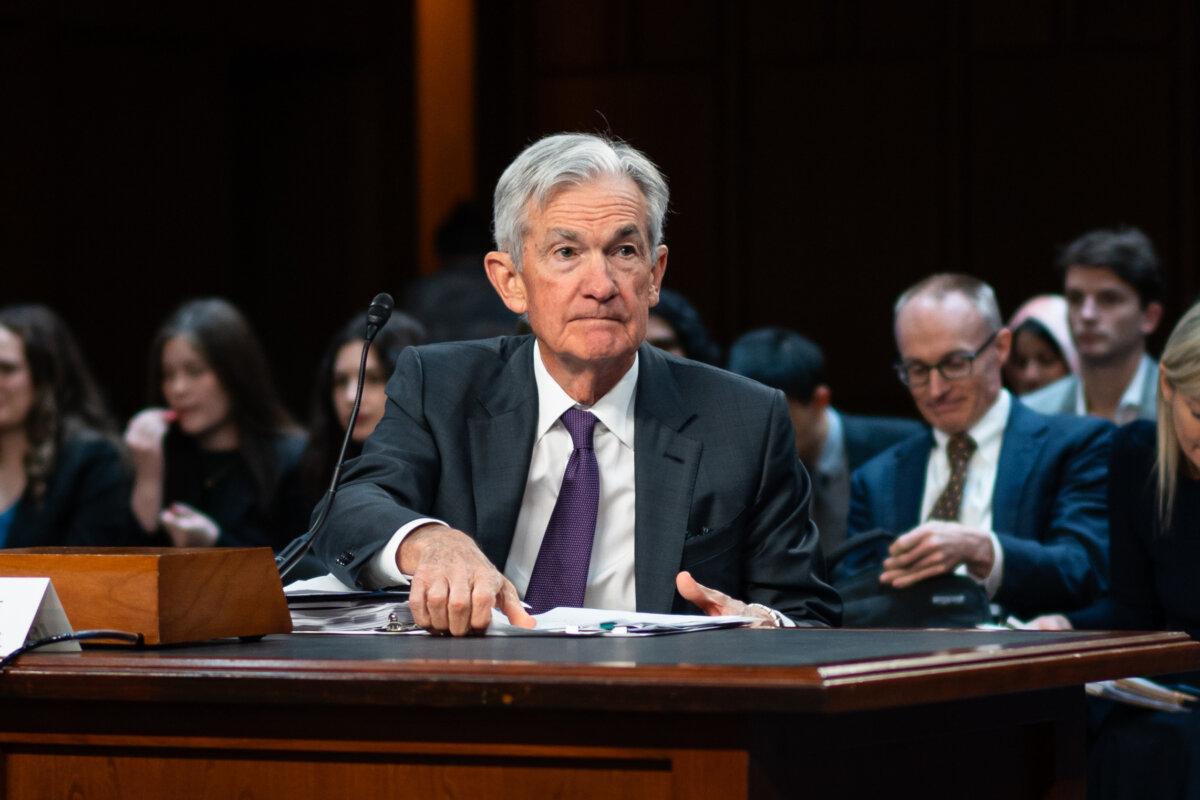‘The president has every right to criticize the decision,’ press secretary Karoline Leavitt said to reporters.
President Donald Trump wants the Federal Reserve to cut interest rates to help ease the U.S. economy’s tariff-driven transition.
Trump has been largely silent about monetary policy for the last several weeks. After the central bank’s March policy meeting, however, the president weighed in on the Federal Reserve’s decision, urging Chair Jerome Powell and his colleagues to lower rates.
April 2 is in reference to the administration’s plan to introduce reciprocal tariffs on all U.S. trade partners on that date.
White House press secretary Karoline Leavitt reiterated the president’s message, telling reporters that Trump and the American people believe in low interest rates.
“The president has every right to criticize the decision, and he’s made it very clear that he believes in lower interest rates are going to help this country boom, and this administration is working on lowering the rate of inflation caused by the previous administration,” Leavitt said.
“Every day, inflation is cooling.”
Powell expects that tariffs could “delay” further progress on inflation this year.
One-year consumer inflation expectations have spiked over the last two months, but long-term market projections have been well anchored.
Ultimately, however, the Federal Reserve is not in a hurry to implement another rate cut and will wait to determine how trade policy changes will play out in the coming months.
All Quiet on the Fed Front
Shortly after returning to the White House in January, Trump said he would “demand that interest rates drop immediately,” a threat that did not materialize. He also encouraged other central banks worldwide to begin cutting interest rates to resuscitate economic growth.
Since then, the president has said little about the Federal Reserve, taking a more hands-off approach that contrasts with his first term.
Trump frequently lambasted Powell and the U.S. central bank on social media and in television interviews, demanding that the institution cut interest rates.
When Powell refused to bend, Trump accused him of “trying to prove how tough he is.”

Federal Reserve Chairman Jerome Powell after testifying before the Senate Committee on Banking, Housing, and Urban Affairs on Capitol Hill in Washington on Feb. 11, 2025. Madalina Vasiliu/The Epoch Times
By the end of 2019, the Fed completed three quarter-point rate cuts to keep the economic expansion going amid slowing global trade flows.
During the 2024 campaign trail, Trump suggested that he could terminate Powell. In addition, financier Scott Bessent, now the Treasury Secretary, proposed installing a shadow Federal Reserve chair to which markets would pay more attention.
Trump and his team have been more cordial in recent months, clarifying that they would allow Powell to finish his term in 2026.
According to Bessent, the administration is more focused on reducing the benchmark 10-year Treasury yield.
Following the Federal Reserve’s super-sized half-point rate cut in September 2024, the 10-year yield shot up more than 100 basis points. However, the yield has been sinking since peaking above 4.8 percent in mid-January, tumbling about 60 basis points to around 4.23 percent.
Fed Still Sees Rate Cuts
And while the Federal Reserve chose to sit on its hands for the second straight meeting, policymakers still anticipate two rate cuts this year.
According to the Summary of Economic Projections, the median policy rate could slide to 3.9 percent by the year’s end, down from the current range of 4.25 and 4.5 percent. This implies the Fed will initiate two quarter-point reductions to the benchmark federal funds rate in 2025.
“We’re not going to be in any hurry to move,” Powell told reporters. “Our current policy stance is well-positioned to deal with the risks and uncertainties we face. The right thing to do is to wait here for greater clarity about what the economy is doing.”
However, the Fed head stated that participants were unwilling to change their rate forecasts due to uncertainty about the broader economic landscape.
The next two-day policy meeting will take place on May 6 and 7.
Original News Source Link – Epoch Times
Running For Office? Conservative Campaign Consulting – Election Day Strategies!


